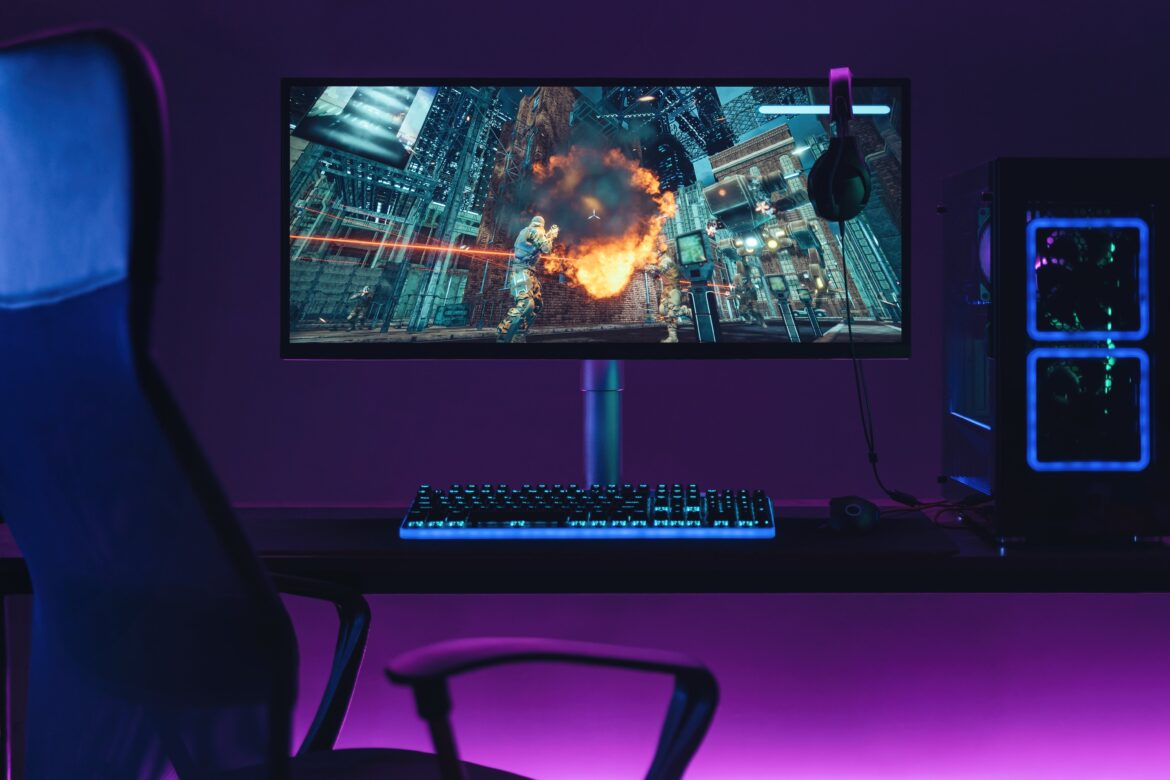A powerful PC configuration can be the difference between heaven and hell when it comes to gaming. A gaming PC can maximize your gaming potential whether you prefer intense open-world adventures, competitive online gaming, or fast-paced first-person shooters. From choosing the best parts to maximizing your gaming experience, this guide will help you build a high-performance gaming PC setup.
Assembling Your Gaming Computer-
Set Financial Goals
Setting a budget is the first step in assembling a gaming PC setup. Selecting the right components will be easier for you if you know how much you are willing to spend. Gaming PC configurations can vary widely, from low-cost builds to expensive, high-end systems. When choosing components, having a budget will help you make better decisions.

Assess Your Needs for Gaming
Think about the games you want to play and the performance you need before you go component shopping. System requirements for games can vary, so it is important to configure your PC according to your preferred gaming style. Are you shooting for 60 frames per second in 1080p, 144 frames per second in 1440p, or even 4K? Making the appropriate component selection will be aided by knowing your target performance goals.
Select the Form Factor of Your Gaming PC.
Gaming PCs are available in a variety of form factors, ranging from full-tower cases to smaller mini-ITX builds. Your decision should be based on your style and the amount of space that is available in your gaming area. Compact form factors are perfect for people who have limited space, while larger cases provide more space for extra parts and cooling solutions.
Choosing Your Elements-
The CPU, or central processing unit
The CPU is your gaming PC’s brain. A modern quad-core or hexacore CPU should be plenty for gaming, but upgrading to a higher-end CPU can prepare your system for increasingly demanding games in the future. A variety of CPUs are available from Intel and AMD that are good for gaming; AMD’s Ryzen series is becoming more and more well-liked due to its great value and multi-threaded performance.
The GPU, or graphics processing unit
The most important part of gaming performance is probably the GPU. Your budget and gaming objectives will determine which of the powerful gaming GPUs made by NVIDIA and AMD you should choose. When choosing a GPU, take into account elements like core count, VRAM size, and support for ray tracing.

RAM, or memory
It is advised that gamers have at least 16GB of RAM, but many enthusiasts choose to have 32GB or more for multitasking and future-proofing. Additionally, high-speed RAM can enhance gaming performance, particularly in CPU-bound games.
Storage
When it comes to storage, think about combining large HDDs for extra game storage with quick SSDs for your operating system and frequently used games. SATA SSDs offer a balance between speed and capacity, while M.2 NVMe SSDs offer lightning-fast load times and responsiveness.
Motherboard and Interface
Select a motherboard with the features you require and compatibility with your CPU. Take note of the quantity of M.2 slots, USB ports, and support for upcoming updates. Convenient built-in Bluetooth and Wi-Fi systems allow for cordless internet access.
Power Supply Unit (PSU)
Choose a PSU that can accommodate future upgrades and adequately power your components. System stability depends on reliable PSUs from companies like Corsair, EVGA, and Seasonic.
Cooling
Noise levels and performance can both be affected by cooling solutions. While aftermarket air or liquid coolers may be preferred by enthusiasts, stock CPU coolers are frequently adequate for casual gaming. To maintain low temperatures, adequate case cooling with intake and exhaust fans is also essential.
Assembling Your Gaming PC-
Setting Up Your Work Area
Make sure your workspace is tidy and well-lit before you begin building. Ensure you have all the necessary tools, including screwdrivers, cable ties, and an anti-static wristband to prevent static discharge.
Mounting the Components
The CPU and RAM should be installed on the motherboard first. After that, slide the motherboard into the casing, tighten the screws, and attach the required cables. Install the storage devices, expansion cards, and GPU. Lastly, attach the PSU and neatly arrange the cables to prevent clutter.
Powering On and Testing
Before closing up the case, connect a monitor, keyboard, and mouse. Power on your PC to ensure it boots correctly. Check for any error messages, and if everything seems fine, you can proceed to install the operating system.

Getting the Most Out of Your Gaming-
Installing Drivers
Make sure you install the most recent drivers for your CPU, GPU, and other components after installing your operating system. These drivers help ensure compatibility and performance.
Overclocking
Performance can be increased for advanced users by overclocking the CPU and GPU. However, be cautious, as it can also generate extra heat. Only attempt overclocking if you’re comfortable with the process and have adequate cooling.
Monitoring and Maintenance
Regularly monitor your PC’s temperatures and performance using software like MSI Afterburner or HWiNFO. Keep your PC clean and dust-free to prevent overheating, and replace thermal paste if necessary.
Gaming Accessories
Enhance your gaming experience with high-quality gaming peripherals, such as a gaming keyboard, mouse, and headset. These accessories can improve your precision and immersion in games.
Constructing a gaming PC setup with superior performance can be a delightful and fulfilling endeavor. You can build a gaming powerhouse that can easily handle the newest titles by carefully planning your build, choosing the best parts, and optimizing your system. You can play games in style and get the performance you want if you have the right information and a little perseverance. Happy gaming!
